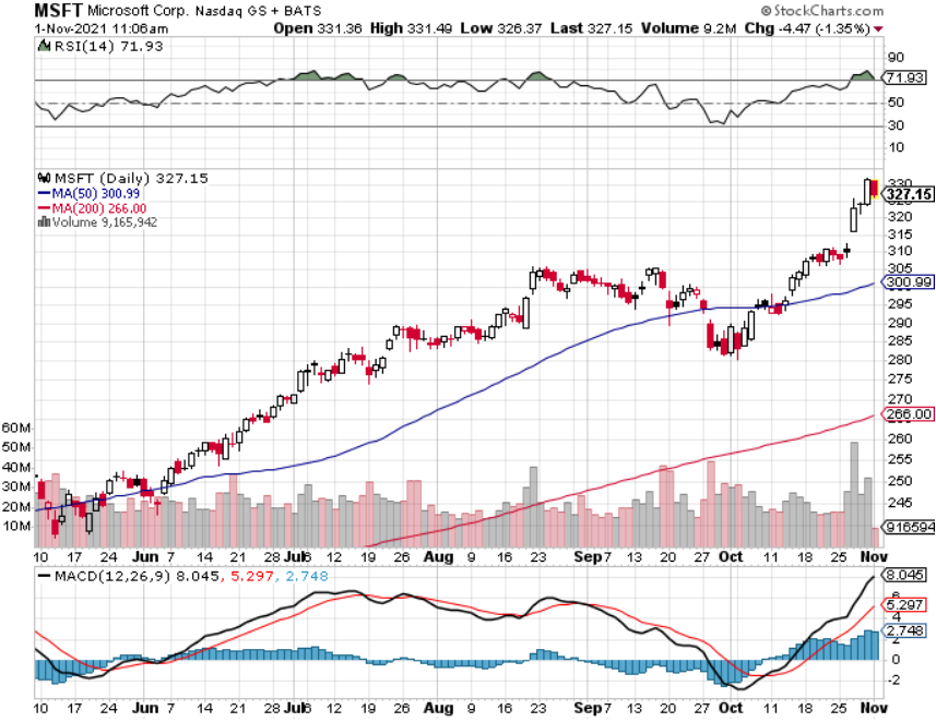What this health crisis did was force us to understand how critical Microsoft (MSFT) and its products, especially Windows, are to the world.
The clamoring for its products whether it be software, hardware, or gaming, spoke volumes to Microsoft’s strategic footprint in the Silicon Valley ecosystem.
That’s part and parcel of why it’s been my go-to, iron-clad tech recommendation for as long as I can remember.
This Redmond, Washington company is an all-weather type of stock and even in an inflationary environment, the first place any business should lean on is Microsoft in order to understand how to ensure that they are able to carve out productivity gains.
And even dealing with constraints, for example, if you have supply chain constraints, one of the goals you want to achieve is run factories or even if that’s your work desk, at the leading edge of the efficient frontier.
That means tools like Microsoft’s cloud products, simulating success is going to make sure that every production run has the least amount of slippage.
So, I think any which way you look, whether it's in the knowledge department, first-line worker, or the cloud products and simulation, utilizing all the stallions in the stable are going to be the best way for any company to deal with inflationary pressures so that they can in fact accelerate productivity the fastest way possible and thereby calculate the fastest way to meet aggregate demand out there.
Microsoft is essentially the best at doing and it’s not even a toss-up.
In a strong inflationary environment, the case for digital transformation strengthens with Microsoft helping others, and this plan is hatched by deploying MSFT’s top-line services to spur digitization as a deflationary force that massages the bottom line.
The signs are everywhere that companies from all walks of life are doing this with Microsoft Cloud quarterly revenue surpassing $20 billion for the first time, up 36% year over year.
Businesses small and large can improve productivity and the affordability of their products and services by building tech in density.
The Microsoft Cloud delivers the end-to-end platforms and tools organizations need to navigate this time of transition and change.
Every organization will need a distributed computing fabric across the cloud and the edge to rapidly build, manage, and deploy applications anywhere.
MSFT is building Azure as the world's computer, with more data center regions than any other provider, delivering fast access to cloud services while addressing critical data residency requirements.
They are partnering with mobile operators from AT&T and Verizon in the United States to Telefonica and BT in Europe, Telstra and Singtel in Asia Pacific, as they embrace new business models and bring ultra-low latency, compute power, and storage to the network and the enterprise edge.
The numbers back up their achievements with 78% of the Fortune 500 using MSFT’s hybrid offerings.
LinkedIn now has nearly 800 million members. Confirmed hires on the platform increased more than 160% year over year. And this quarter, MSFT launched new ways to help job seekers discover roles that align with how they want to work. In a rapidly evolving labor market, companies are increasingly turning to LinkedIn Learning to upskill and reskill their employees.
The totality of MSFT’s dominance translated into MSFT notching first-quarter revenue of $45.3 billion, up 22%.
MSFT will surpass $200 billion of total revenue this year and they will easily surpass $300 billion annually in the next 18 months.
I am highly bullish MSFT — buy on every and all dips.


